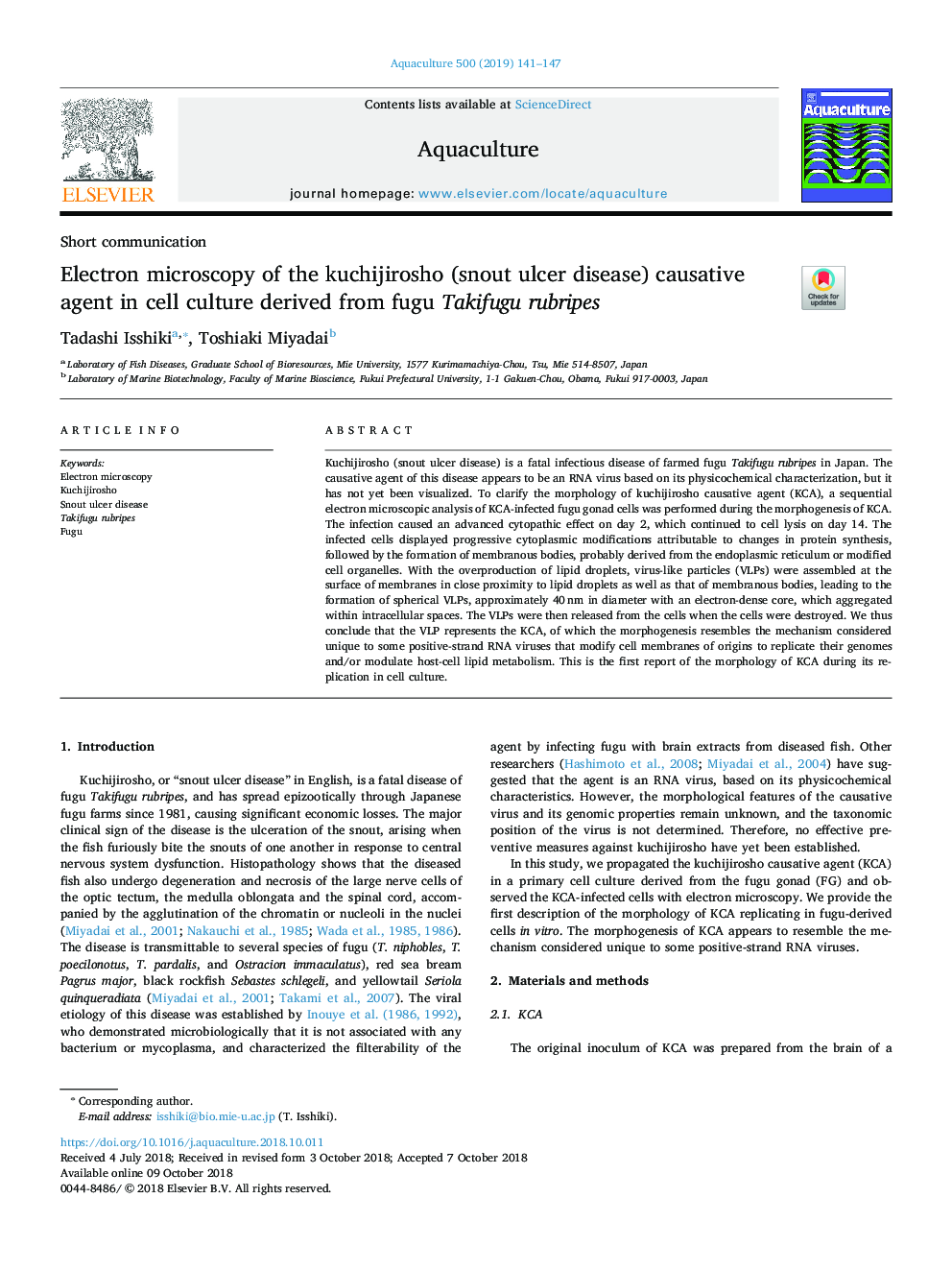| Article ID | Journal | Published Year | Pages | File Type |
|---|---|---|---|---|
| 11262775 | Aquaculture | 2019 | 7 Pages |
Abstract
Kuchijirosho (snout ulcer disease) is a fatal infectious disease of farmed fugu Takifugu rubripes in Japan. The causative agent of this disease appears to be an RNA virus based on its physicochemical characterization, but it has not yet been visualized. To clarify the morphology of kuchijirosho causative agent (KCA), a sequential electron microscopic analysis of KCA-infected fugu gonad cells was performed during the morphogenesis of KCA. The infection caused an advanced cytopathic effect on day 2, which continued to cell lysis on day 14. The infected cells displayed progressive cytoplasmic modifications attributable to changes in protein synthesis, followed by the formation of membranous bodies, probably derived from the endoplasmic reticulum or modified cell organelles. With the overproduction of lipid droplets, virus-like particles (VLPs) were assembled at the surface of membranes in close proximity to lipid droplets as well as that of membranous bodies, leading to the formation of spherical VLPs, approximately 40â¯nm in diameter with an electron-dense core, which aggregated within intracellular spaces. The VLPs were then released from the cells when the cells were destroyed. We thus conclude that the VLP represents the KCA, of which the morphogenesis resembles the mechanism considered unique to some positive-strand RNA viruses that modify cell membranes of origins to replicate their genomes and/or modulate host-cell lipid metabolism. This is the first report of the morphology of KCA during its replication in cell culture.
Related Topics
Life Sciences
Agricultural and Biological Sciences
Aquatic Science
Authors
Tadashi Isshiki, Toshiaki Miyadai,
